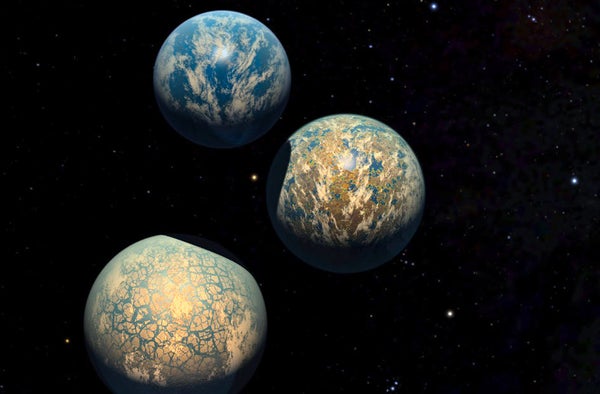This article was published in Scientific American’s former blog network and reflects the views of the author, not necessarily those of Scientific American
It's that time of the sidereal year where we take stock of what's been going on during the last orbit of Earth around the Sun. Here are a few choice tidbits for astrobiology:
Martian methane (again): In June 2018 new results from NASA's Curiosity rover mission reported findings on seasonal peaks in atmospheric methane (they seem to happen) and 'tough' organic molecules in sedimentary rocks that suggest the presence of more complex carbon species lurking close to the surface.
Barnard's Star has (at least one) planet: November 2018 brought news of a likely detection of a cold super-Earth planet orbiting Barnard's Star - a long favorite of exoplanet speculation due in part to this low-mass star being a mere 1.8 parsecs from us and being a single star (rather than part of a multiple like the Alpha Centauri/Proxima Centauri stars).
On supporting science journalism
If you're enjoying this article, consider supporting our award-winning journalism by subscribing. By purchasing a subscription you are helping to ensure the future of impactful stories about the discoveries and ideas shaping our world today.
An Exomoon?: October 2018 brought the most recent results of a search for signs of exomoons in transit data, this time from Hubble observations of a Kepler-discovered candidate around the star Kepler-1625. Tantalizing stuff and a heroic effort in data analysis and assessment. The candidate is challenging models - it would be a Neptune-sized moon orbiting a Jupiter-class gas giant.
Proxima Centauri b Habitable?: In September 2018 a set of detailed climate simulations suggested that if our nearest known exoplanet has lots of water it could indeed be temperate on much of its surface, even if tidally locked to its parent star. What we don't yet know is whether this world has, or can hold onto, water.
Deep Biosphere Gets Bigger: Some results from a ten year study as part of the Deep Carbon Observatory project suggest that Earth's subsurface life represents by far the largest biomass (and probably genetic diversity) on the planet. 300 to 400 times the mass of all humans lurks beneath in the form of mostly microbial life - that's up to 23 billion metric tonnes of carbon in living things.
The 'Oumuamua Puzzle Continued: Although discovered in late 2017, this hyperbolically orbiting extrasolar interloper continued to hold our fascination. In particular, a June 2018 report on what appears to be a small, but anomalous acceleration of this object as it heads back out to interstellar space got people speculating wildly - including even toying with the notion of 'Oumuamua having deployed a light sail.
New Path to Earth's Moon?: February 2018 brought an intriguing new theory on the process of our Moon's formation - that tries to better explain its composition in relation to Earth's (hint: they're awfully similar). The idea involves a 'synestia' - a cloud of vaporized and molten minerals formed when a proto-Earth collided with another planet-scale object. In this picture the Moon actually condenses out of the synestia before the Earth is fully assembled from the cooling, re-condensing matter.
SETI and Technosignatures: Looking for evidence of technological life in the universe has got increasing respect in 2018. Even NASA (after a very long hiatus) supported a workshop on these studies. One of the neatest pieces of scientific work on SETI was this paper on the Cosmic Haystack Equation - which tells us that we really have only effectively searched a hot-tub's worth of parameter space compared to the vast ocean represented by our galaxy. Time to do more.
